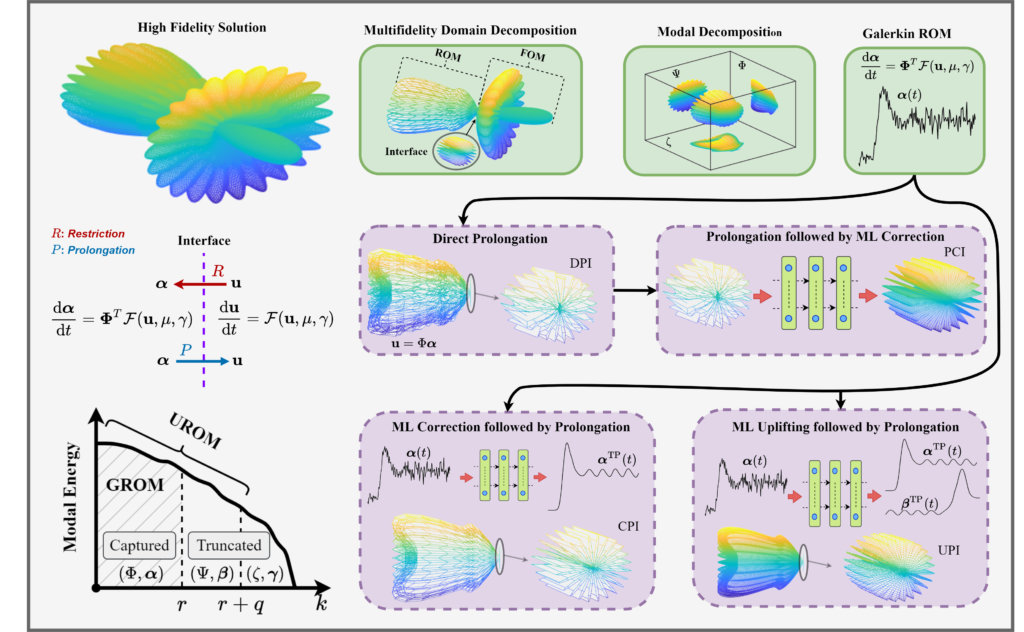Hybrid physics-machine learning models are increasingly being used in simulations of transport processes. Many complex multiphysics systems relevant to scientific and engineering applications include multiple spatiotemporal scales and comprise a multifidelity problem sharing an interface between various formulations or heterogeneous computational entities. To this end, we present a robust hybrid analysis and modeling approach combining a physics-based full order model (FOM) and a data-driven reduced order model (ROM) to form the building blocks of an integrated approach among mixed fidelity descriptions toward predictive digital twin technologies. At the interface, we introduce a long short-term memory network to bridge these high and low-fidelity models in various forms of interfacial error correction or prolongation. The proposed interface learning approaches are tested as a new way to address ROM-FOM coupling problems solving nonlinear advection-diffusion flow situations with a bifidelity setup that captures the essence of a broad class of transport processes.

The proposed multifidelity concepts toward hybrid ROM/FOM coupling can be seen below. Dashed blocks refer to the interface learning approaches introduced in the present work: (a) Direct Prolongation Interface (DPI), (b) Prolongation followed by a machine learning Correction Interface (PCI), (c) machine learning Correction followed by a Prolongation Interface (CPI), and (d) Uplifted Prolongation Interface (UPI) where the latent space is enhanced through machine learning before we apply the prolongation operator.

More details can be found at https://arxiv.org/abs/2007.06179